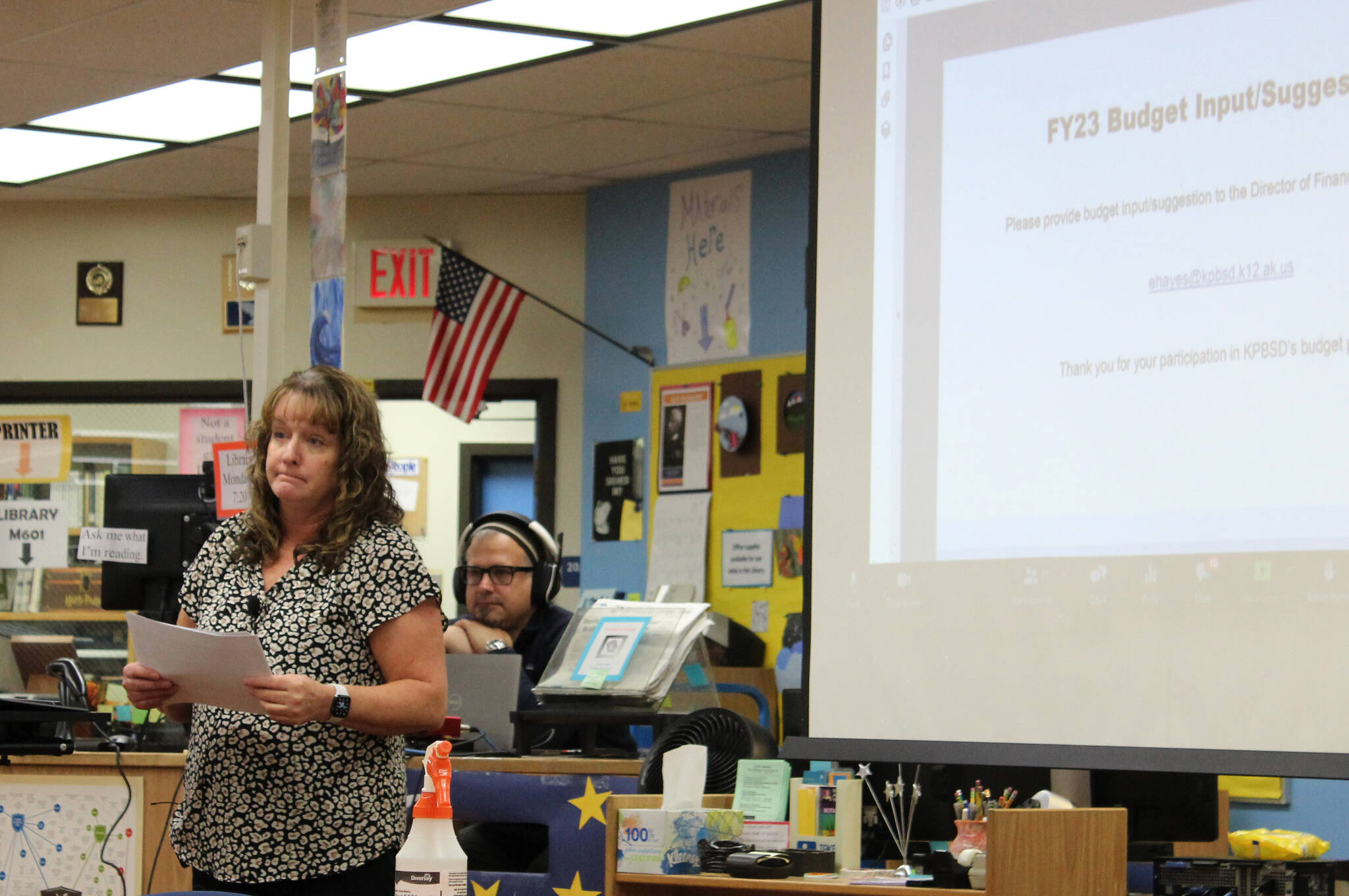Budget season is ramping up for the Kenai Peninsula Borough School District. District administrators and members of the KPBSD Board of Education met with the Kenai Peninsula Borough Assembly on Tuesday afternoon for the first of multiple work sessions aimed at hashing out expectations for the upcoming fiscal year. Fiscal year 2023 begins on July 1, 2022 and ends on June 30, 2023.
The bulk of the school district’s general fund revenue comes from three places: the State of Alaska, the Kenai Peninsula Borough and from “other” sources including things like federal e-rate and interest earnings. KPBSD Finance Director Liz Hayes said Tuesday that the sum of those sources is expected to be around $131.5 million for the upcoming fiscal year. One-hundred percent of general fund revenue is already accounted for in fiscal year 2023, with more than $100 million going to pay employee salaries and benefits.
The State of Alaska uses a formula to determine funding to school districts based on student enrollment — called the foundation formula. The formula has several steps and multipliers, and determines the base student allocation, or BSA. Alaska’s per-pupil BSA has not changed since FY17 and is $5,930.
From the Kenai Peninsula Borough for fiscal year 2023, the school district is requesting $50 million. That’s the same amount the borough ultimately gave the district last year and in fiscal year 2021.
What the school district receives from the state and from the borough, however, does not include federal funding received — such as through the relief programs launched throughout the COVID-19 pandemic. In all, KPBSD has received federal funds through three different programs during the pandemic, which come from the Elementary and Secondary School Emergency Relief, or ESSER, funds.
Under the federal CARES Act passed in 2020, KPBSD received about $2.3 million in ESSER funds. Those funds, Hayes said Tuesday, were fully spent during fiscal year 2021.
The district received a second round of funding — ESSER II funds — in the amount of about $9 million under the Coronavirus Response and Relief Supplemental Appropriations, or CRRSA, Act. The district used those funds to save teaching positions that would have otherwise been eliminated.
A third round of funding — ESSER III — was approved under the American Rescue Plan Act, or ARPA, signed into law by President Joe Biden in 2021. Under ARPA, KPBSD received about $20 million, 20% of which — about $4 million — must be used to help catch up students who fell behind academically during the pandemic.
Hayes said Tuesday that an additional roughly $2 million was used to give members of the Kenai Peninsula Education Association and the Kenai Peninsula Education Support Association one-time payments of $1,500. KPEA is the union representing the district’s teachers and certified staff. KPESA is the union representing the district’s support staff.
Another $7.6 million in ESSER III funds will be used to offset an anticipated budget deficit of the same amount. Hayes said the fiscal year 2023 budget process started with a $7.6 million budget deficit, representing salary and benefit costs for about 78 of the district’s certified and noncertified staff. Hayes said she was directed by the board of education to use ESSER III funds to save those positions.
“We did balance our budget based on the grant funding that we’re receiving from COVID,” Hayes told the assembly Tuesday. “So just know that yeah, it’s balanced now, but it was a deficit out of the gate.”
When asked how the district is preparing for a drop-off in federal funds when COVID monies have been expended, KPBSD Superintendent Clayton Holland said the district is in the process of “paring down” positions throughout the district. Holland said the board of education continues to receive notices of retirement and resignation in addition to new hires.
“We’re going to do our best to avoid a huge 78-person cut two years out from now,” Holland said Tuesday. “We’re going to continue that process and bring those numbers in alignment to where they need to be.”
KPBSD has requested student and parent input on the budget to be provided at three budget meetings this month. The first meeting will be held on Feb. 15 at 6 p.m. in the Homer High School library. The next will be held at the Kenai Central High School library on Feb. 16 at 6 p.m. The final meeting will be held at the Seward High School library on Feb. 24 at 6 p.m.
More information about the school district’s budget process can be found on KPBSD’s finance page.
Reach reporter Ashlyn O’Hara at ashlyn.ohara@peninsulaclarion.com.

